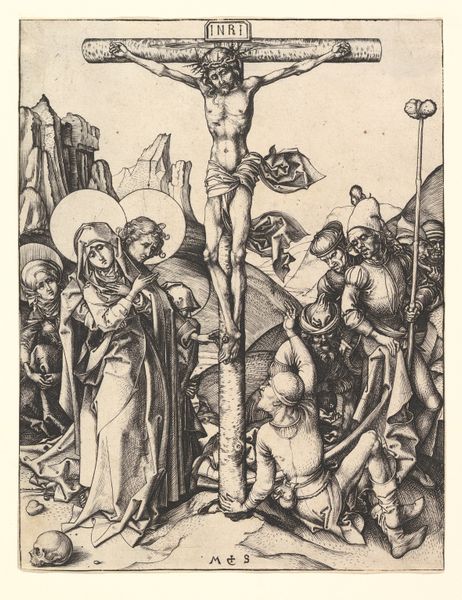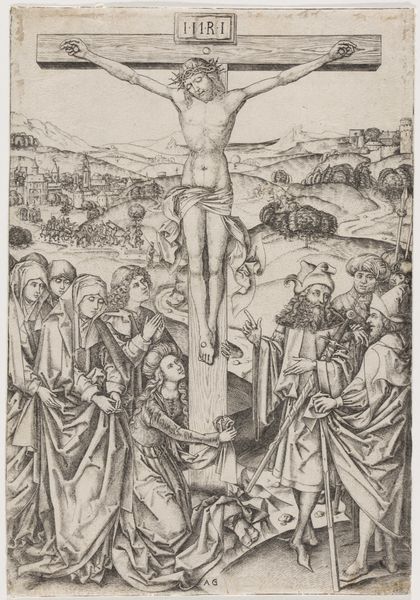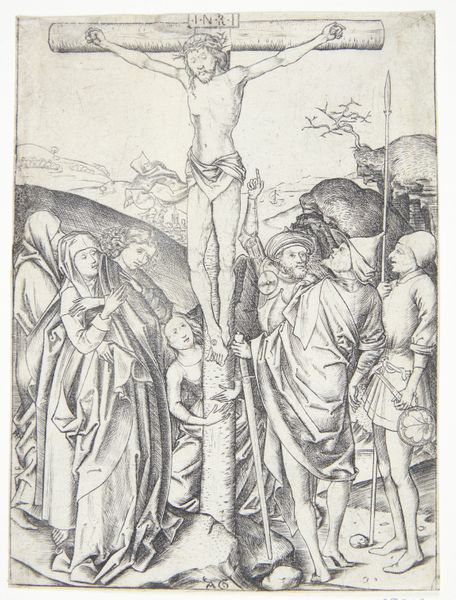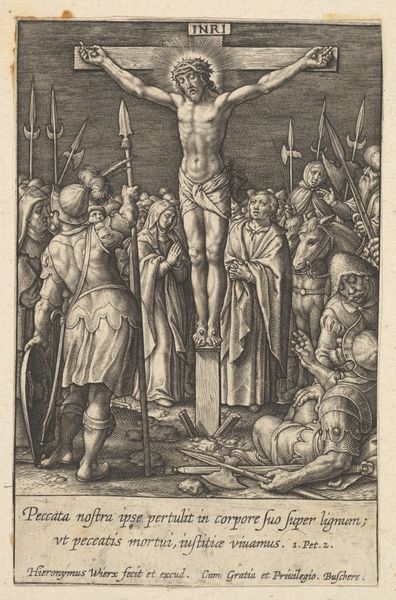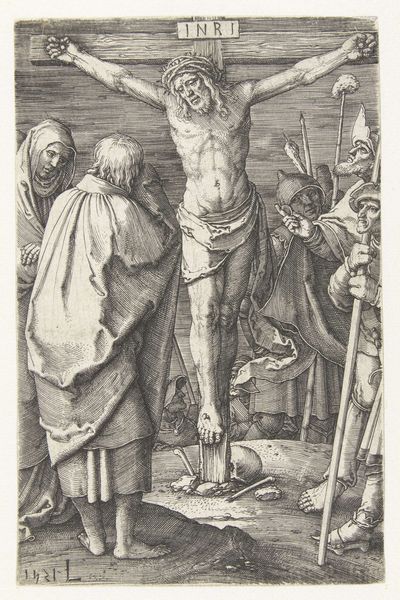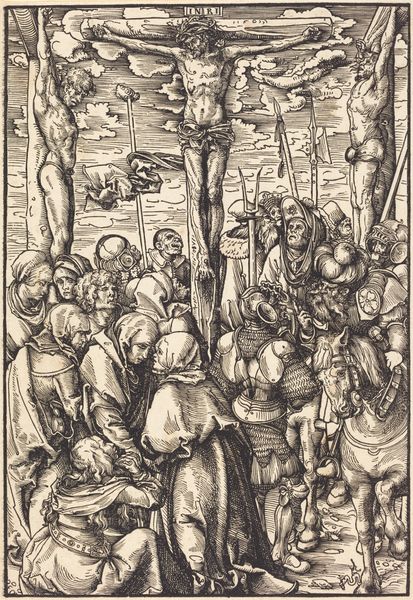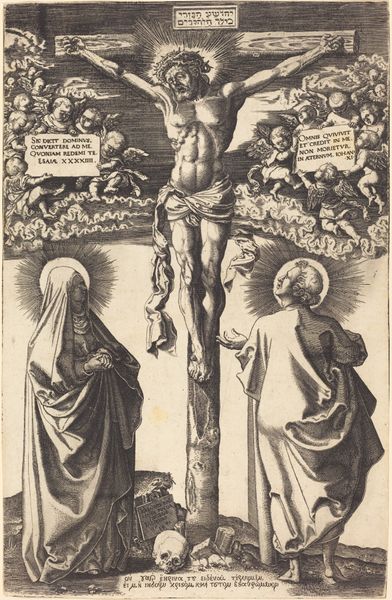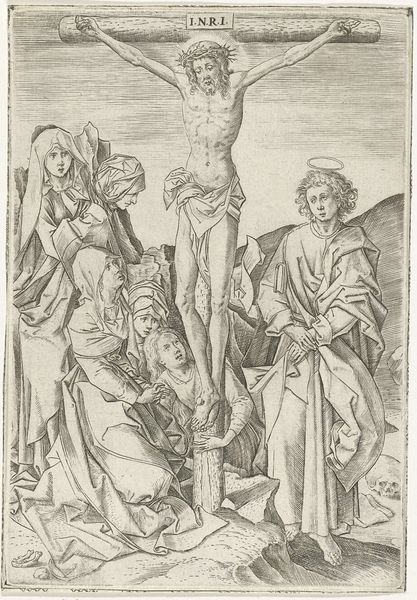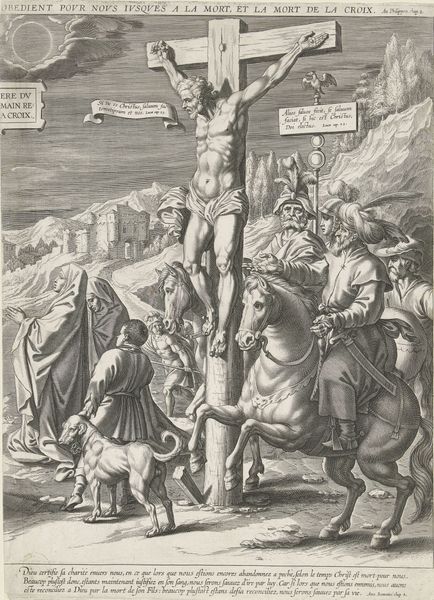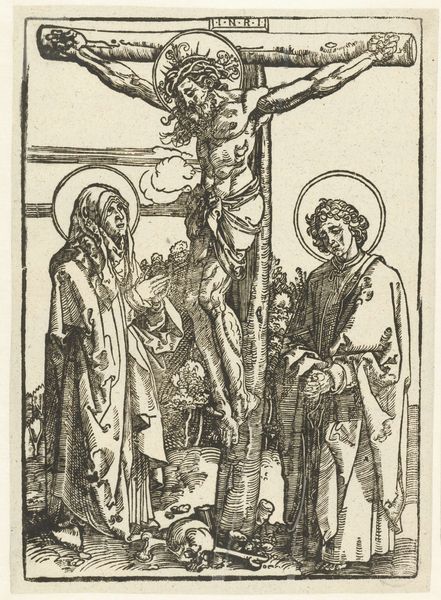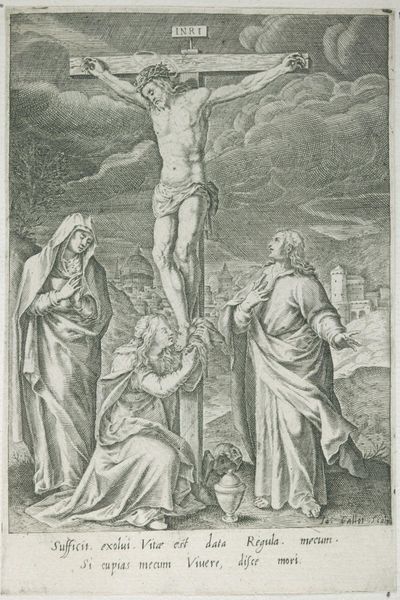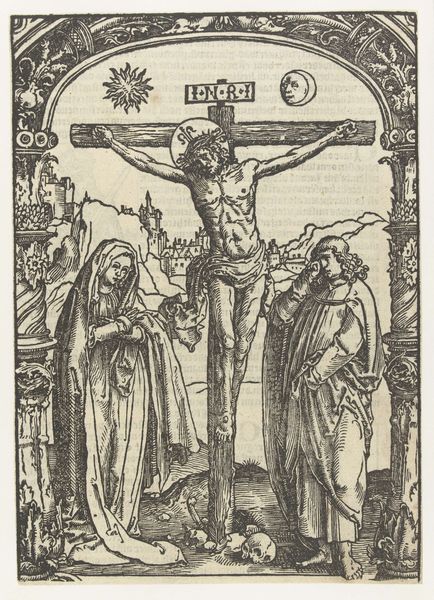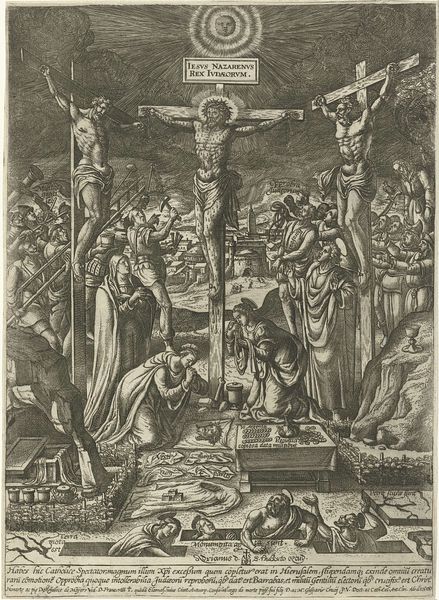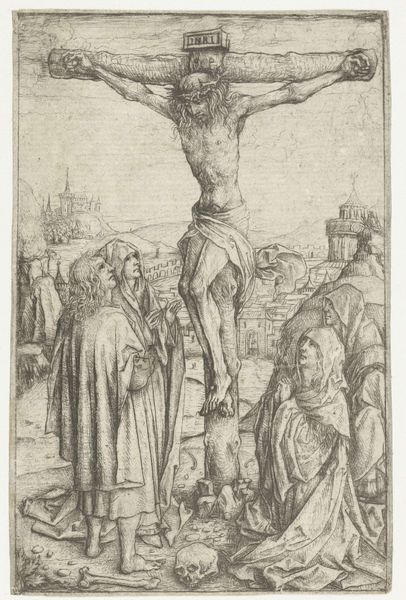
The Crucifixion with the Holy Women, St. John and Roman Soldiers n.d.
0:00
0:00
drawing, print, paper, engraving
#
drawing
#
narrative-art
# print
#
figuration
#
paper
#
history-painting
#
engraving
Dimensions: 193 × 152 mm (sheet, trimmed within platemark)
Copyright: Public Domain
Curator: Today, we’re looking at a finely detailed engraving by Martin Schongauer titled "The Crucifixion with the Holy Women, St. John and Roman Soldiers," date unknown. The print on paper is held here at the Art Institute of Chicago. Editor: The density of figures strikes me first. The cross looms centrally, surrounded by grief and a certain brutal indifference. There’s a real visual tension created by that stark contrast. Curator: Indeed. Schongauer's skill is evident in the way he uses line and shading to create depth and texture. Observe how he differentiates fabrics, from the heavy armor of the soldiers to the delicate drapery of the women. It speaks volumes about material culture. Editor: The placement of the skull at the base of the cross also suggests Adam, the first man. In Christian iconography, Christ's sacrifice redeems the sin of Adam, so the image functions as a symbolic bookend. Curator: An excellent observation. The composition reinforces this too: the emotional intensity is largely concentrated in the lower left quadrant with the holy women, which sharply contrasts with the soldiers on the right, enacting their duties with varied responses from focused cruelty to disinterest. This balance reflects Schongauer’s structural approach. Editor: Absolutely. The soldiers carry a certain symbolic weight as well, representing the worldly power that opposed Christ. It’s a recurring visual shorthand for that tension between faith and empire. The contrast amplifies the narratives power. Curator: Moreover, if we analyze it formally, the interplay of light and shadow creates an emotional topography across the entire print. See how Christ is highlighted, drawing the eye despite the visual noise throughout. Editor: Seeing this print deepens my appreciation of how recurring symbols become embedded and take on emotional complexity with age. What began as simple figures evolved into visual emblems of power, suffering, and salvation, their density and their very shapes so powerful and enduring that they resonate even today. Curator: Well articulated, allowing for us to better decode its profound visual logic by looking at this example of Early Renaissance engraving.
Comments
No comments
Be the first to comment and join the conversation on the ultimate creative platform.
